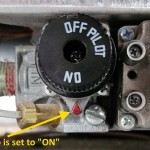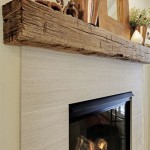Designing a Living Room With a Fireplace and TV
Successfully integrating a fireplace and a television into a living room design presents a common challenge in modern interior design. Both elements often serve as focal points, and achieving a harmonious balance requires careful consideration of several factors, including spatial arrangement, visual hierarchy, and technological integration. A well-executed design should prioritize both functionality and aesthetics, creating a comfortable and visually appealing space.
This article explores various strategies and design principles for incorporating a fireplace and a television into a living room. The information provides a framework for homeowners and designers seeking to create a balanced and functional living space centered around these two dominant features. Emphasis is placed on achieving a layout that optimizes viewing angles, minimizes glare, and promotes overall visual coherence.
Optimizing Spatial Arrangement and Layout
The initial step in designing a living room with a fireplace and a television involves determining the optimal spatial arrangement. Several factors influence this decision, including room size, shape, and the location of existing architectural features such as windows and doorways. The primary goal is to create a layout that facilitates comfortable viewing of both the fireplace and the television while maintaining a sense of balance and flow within the room.
One common approach is arranging the furniture around both the fireplace and the television, creating a dual focal point. This layout typically involves placing a sofa facing the television and flanking either side with chairs angled towards the fireplace. This arrangement encourages conversation and allows occupants to enjoy both features simultaneously. However, this solution may not be ideal for smaller rooms, where it can lead to a cluttered and cramped feeling.
Another strategy involves prioritizing one element as the primary focal point. In this case, the furniture is oriented primarily towards either the fireplace or the television, with the other element serving as a secondary feature. For example, in a room with a particularly striking fireplace, the furniture might be arranged to emphasize the fireplace, with the television positioned to the side or above it. This approach can maintain a sense of visual hierarchy and prevent the room from feeling overwhelming.
Consideration should also be given to the viewing distance from the television. A general rule of thumb is that the viewing distance should be approximately 1.5 to 2.5 times the diagonal screen size of the television. This ensures an optimal viewing experience and minimizes eye strain. The furniture arrangement should be adjusted accordingly to achieve this distance.
Traffic flow is another crucial aspect of spatial arrangement. The furniture should be positioned to allow for easy movement throughout the room, avoiding any obstacles or bottlenecks. A well-designed layout should promote a natural and intuitive flow of traffic.
Finally, consider the placement of windows and other natural light sources. Direct sunlight can cause glare on the television screen, making it difficult to view. It may be necessary to use window treatments, such as blinds or curtains, to control the amount of sunlight entering the room. The fireplace should also be positioned away from excessive drafts, which can affect its efficiency.
Addressing Visual Hierarchy and Aesthetic Considerations
Beyond spatial arrangement, visual hierarchy plays a significant role in creating a harmonious living room design. Visual hierarchy refers to the arrangement of elements in a way that guides the viewer's eye and establishes a clear focal point. In a living room with a fireplace and a television, it is important to create a visual hierarchy that balances the two features and prevents them from competing for attention.
One way to achieve visual hierarchy is through scale. If possible, the fireplace should be larger and more visually dominant than the television. This can be achieved by using a substantial mantel, surrounding the fireplace with decorative stonework, or incorporating architectural details that draw attention to the fireplace. The television, on the other hand, should be sized appropriately for the room and integrated seamlessly into the overall design.
The color palette also plays a crucial role in establishing visual hierarchy. Using contrasting colors can draw attention to specific elements, while using a more cohesive color scheme can create a sense of balance. For example, if the fireplace is made of a dark stone, using lighter colors for the surrounding walls and furniture can help it stand out. Conversely, if the television is black and modern, using similar dark colors throughout the room can help it blend in.
Texture is another important element to consider. Incorporating a variety of textures, such as wood, stone, fabric, and metal, can add visual interest and depth to the room. The textures used around the fireplace and the television should complement each other and contribute to the overall aesthetic.
The style of the fireplace and the television should also be compatible. A traditional fireplace, for example, might not be well-suited for a sleek, modern television. Choosing elements that share a common aesthetic will create a more cohesive and harmonious design. Consider the architectural style of the house and select pieces that complement that style.
Ultimately, the goal is to create a visual hierarchy that reflects the homeowner's preferences and lifestyle. Some homeowners may prefer to prioritize the fireplace, while others may prefer to prioritize the television. The design should be tailored to meet the individual needs and tastes of the occupants.
Integrating Technology and Managing Cables
In the digital age, integrating technology seamlessly into a living room design is essential. This includes not only the television but also other electronic devices, such as sound systems, gaming consoles, and streaming devices. Managing cables and wires is crucial for maintaining a clean and organized aesthetic.
One of the most common challenges is concealing the cables associated with the television. Several options are available for managing these cables. One option is to run the cables through the wall using a cable management kit. These kits typically include a conduit that allows the cables to be hidden behind the wall, creating a clean and seamless look. Another option is to use cable concealers, which are plastic or metal channels that can be mounted on the wall to hide the cables.
Another approach is to integrate the television and other electronic devices into custom cabinetry. This allows for the cables and wires to be completely hidden from view, creating a clean and organized look. Custom cabinetry can also provide storage space for other items, such as DVDs, Blu-rays, and gaming accessories.
Consider using a universal remote control to simplify the operation of multiple devices. This eliminates the need for multiple remotes and streamlines the user experience. Many universal remote controls can be programmed to control not only the television but also the sound system, streaming devices, and even smart home devices.
Power outlets should be strategically placed to minimize the visibility of power cords. Consider installing power outlets behind the television and other electronic devices to keep the cords hidden from view. Surge protectors are also essential for protecting electronic devices from power surges.
Wireless technology can also help to minimize the clutter associated with cables and wires. Streaming devices, such as Roku and Apple TV, can connect to the television wirelessly, eliminating the need for HDMI cables. Wireless speakers can also be used to create a surround sound system without the need for speaker wires.
Finally, consider the placement of the sound system. The speakers should be positioned to provide optimal sound quality and create an immersive audio experience. Surround sound systems typically require multiple speakers to be placed throughout the room. Consider using in-wall or in-ceiling speakers to minimize the visibility of the speakers and create a clean and modern aesthetic.
By carefully considering these factors, homeowners and designers can create a living room that is both functional and aesthetically pleasing, seamlessly integrating a fireplace and a television into a cohesive and harmonious design. The key is to prioritize spatial arrangement, visual hierarchy, and technological integration to achieve a balanced and comfortable living space.

Tv And Fireplace In One Room Find The Perfectly Happy Spot For That Black Beast Form Design Tasteful Interiors Living Well
Interior Designers Reveal The Mistakes You Re Making In A Living Room

13 Impressive Living Room Ideas With Fireplace And Tv Lmolnar Contemporary Design Family House

13 Impressive Living Room Ideas With Fireplace And Tv Lmolnar Design Designs

Layout A Living Room With Tv Fireplace Florida Leather Gallery
Why A Focal Point Doesn T Always Need To Be Fireplace The Living House
Interior Designers Reveal The Mistakes You Re Making In A Living Room

House Home 10 Living Room Design Ideas You Ll Love

7 Ways To Rock A Tv And Fireplace Combo

11 Appealing Living Room Designs With A Fireplace








